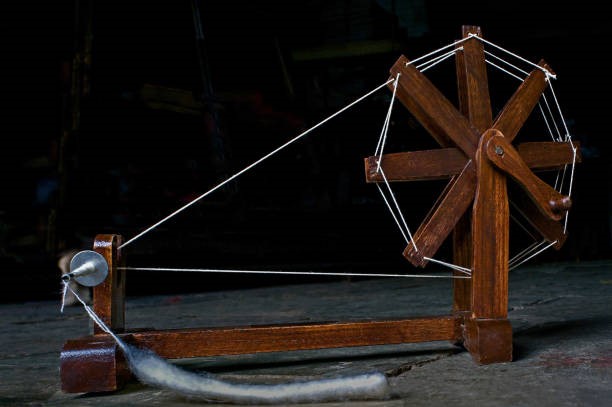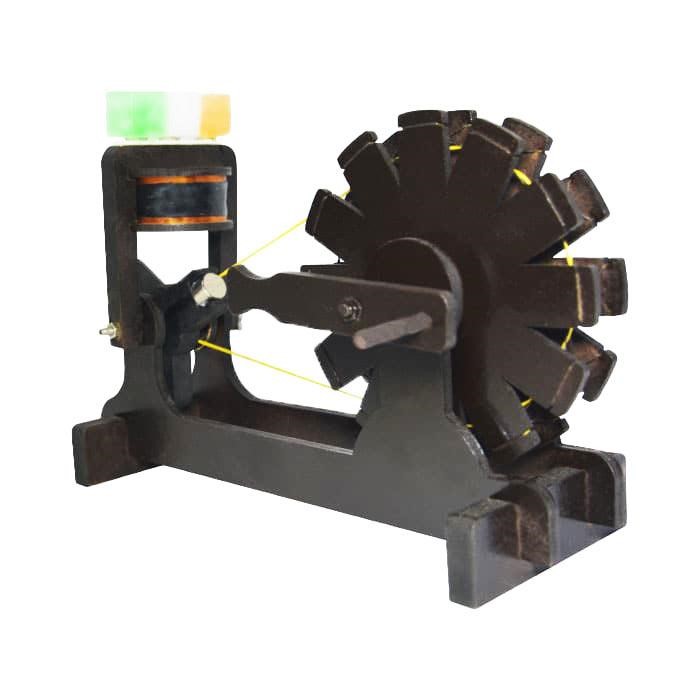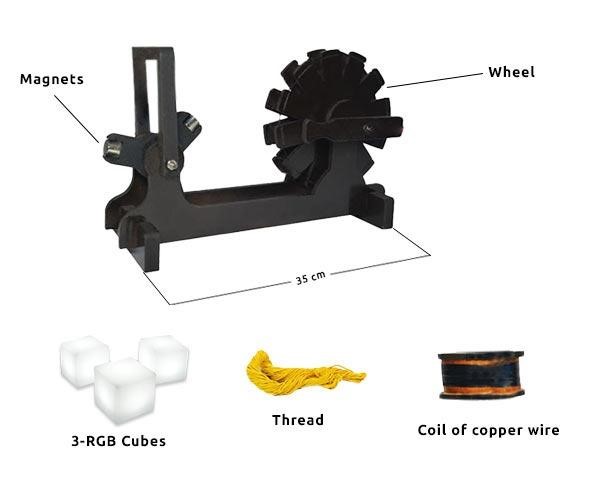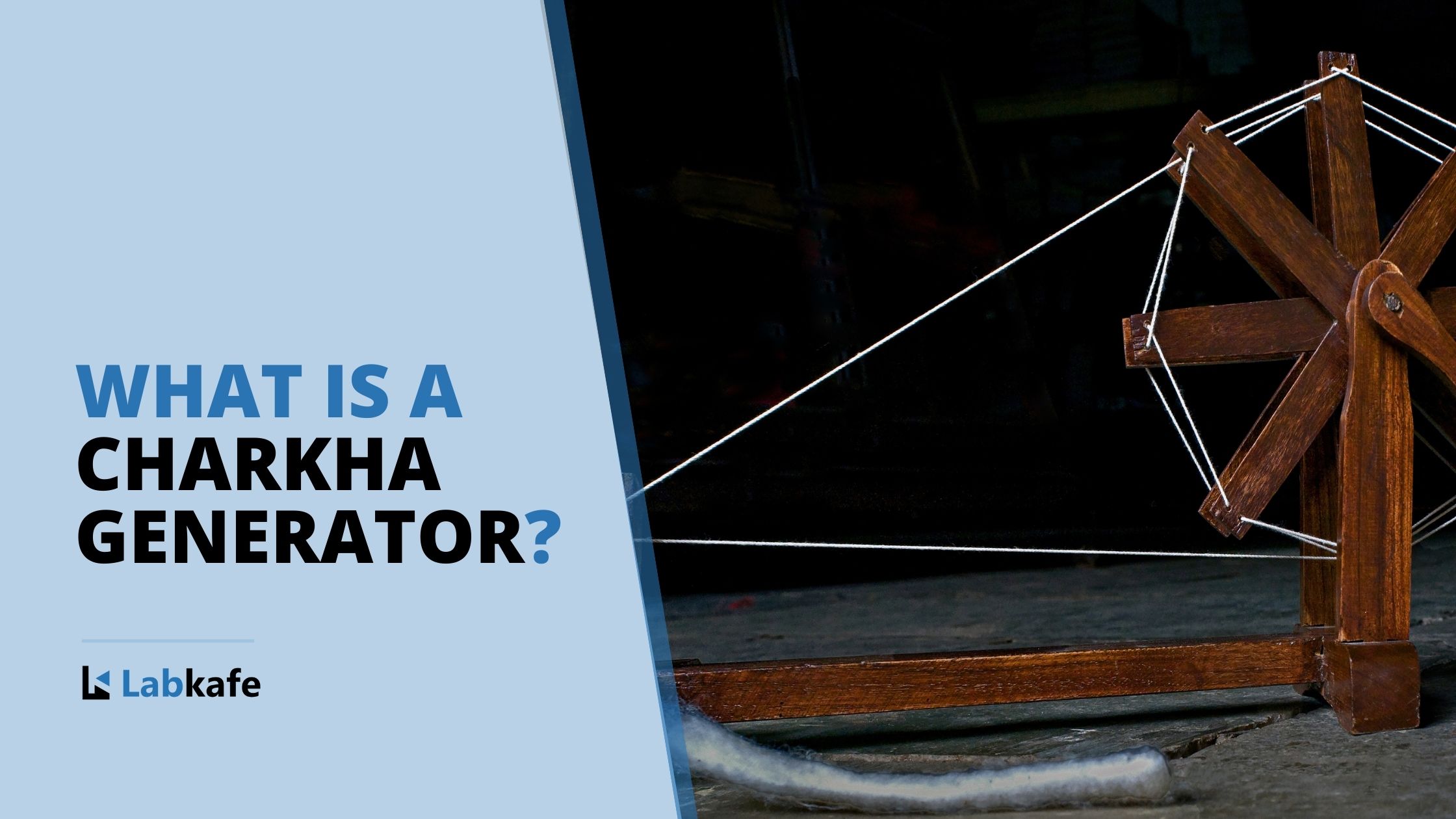![]()
Bapu Used To Make Threads ‒ Now You Can Make Electricity
Last week we celebrated the birthday of the great Mohandas Karamchand Gandhi ‒ Mahatma Gandhi. He was the starter of the charkha movement in India, to help us become self-sufficient. One and a half-century later, here we are with the device reinvented as a charkha generator. That sounds curious! How do you punch a generator inside such a noir device like a charkha? Well folks, today we will explore that very question.
What is a Charkha
In this modern age of machinery and mobiles, no wonder most people don’t recognize old hand-driven machines like this. So let’s talk about Charkha first ‒ what it is, how it works, and why did they use it in the olden days.
In English, a charkha is called an Indian Spinning Wheel. Spinning wheels were used to make threads or yarn out of cotton or other fibers. Before the industrial revolution came, there were no big machines to do this; hence people of the olden times used hand-powered tools like these. Considering the alternative is to do it by hand, this simple machine is surprisingly efficient!

A spinning wheel is actually made of two wheels ‒ one pretty large, and one pretty small. They are connected by a belt or a strong twine; and so if you turn the big wheel by hand (there is a handle attached to it for that purpose), the small wheel spins much faster. How much faster? You can work that out using the sizes of the wheels, it’s pretty basic math.
Okay, so far so good, but what does that accomplice? Let me tell you. Do you know how you can make a thread out of a clump of cotton? First, you have to tease out a little bit of the cotton and twist it into a thin string shape. Then you have to keep pulling and twisting. If you keep up an even rate of pulling and twisting, (that is, tension and perpendicular torque), then you will soon get a fine string in your hands coming out of that ball of cotton as it gets shorter.
“A charkha or spinning wheel is one of the oldest machines in the world.”
But doing it by hand is quite a big pain ‒ try and see! Also, no way you can keep an even tension and torque by hand ‒ humans aren’t that precise by design. Here is where the charkha comes in. We simply attach a spindle to the smaller wheel and stick that fist bit of fat, shapeless thread onto it. Now as the small wheel spins, the spindle will automatically pull and twist the thread. It’s like magic!
There were many kinds of spinning wheels in those days ‒ not only for making threads but for other purposes too. The oldest one may have existed in the Indus Valley civilization ‒ or even before that! (That’s right, this is another thing that ancient Indians invented. Cool people, huh?) Nobody knows when woven clothing actually started first, and you gotta have something like a spinning wheel to make woven clothes.
In the days before the industrial era, a spinning wheel was the only way you could make threads or yarns from wool, cotton, or other fibers. As steam or electric-powered machines came into existence, larger, faster, more powerful machines took up the charge. But the charkha remains steadily in our hearts, as a symbol of the old atma nirbhar India.
Parts of a Charkha Generator
Just like a standard spinning wheel, the most important parts of a charkha generator are its two wheels. But instead of a spindle attached to the small wheel, we put a generator on it. The small wheel turns the hub of the generator, and that, in turn, makes electricity. Ingenious, right? Labkafe makes an excellent DIY charkha generator as a part of their STEM kit, you should try it out.

We talked above about other ways of using spinning wheels ‒ this, it seems, would be the latest twist in that! Imagine how astonished the old-timers would be if they could see this now. A charkha that makes electricity! Make it big enough and you can literally light up your room by hand ‒ who cares if the main power is on or not.
But hold on a second. You must be asking, “but how does a generator work? You skipped over the most important part there!” Well, let me fix that.
Working Principles of a Charkha Generator
…Or any generator, basically. You see, the generator in this DIY toy is made up of a magnet and a copper coil. The magnet is fixed to the small wheel of the charkha, so it spins very fast near the coil. It presents one pole and the other pole of the magnet alternatively in the face of that copper coil. And the coil gets very excited about all that pole-changing (who wouldn’t, right?) and produces electricity. The small lights attached to the top of the coil bring proof of this with flashes of light as you spin the big wheel faster and faster.
<VIDEO title= “Using a Charkha Generator”>
Now you may ask, what’s the deal with magnets and copper coils? Why should a bunch of wires create something as awesome as electricity just because somebody waved a magnet in front of it? The answer is this.
Magnetism is a truly weird but very useful force. It has the ability to “nudge” electrons inside atoms so they jump out of place whenever a magnet is brought close to them. God knows they are already jumpy enough. Now, when you bring one pole of a magnet near most metals, the electrons inside it jump out of their orbits and leave a hole behind. This is happening with not just one atom in the wire but along its whole body, with every atom. There are literally trillions there!
But here, the magnet is spinning, so it is presenting alternate poles to the same bit of wire very fast. So the electrons, way too fed up with all the electromagnetic pushing and shoving, start trying to get out of the way through one end of the wire. If you put a better place for them to escape in ‒ like a lamp ‒ they go right into it. (And the lamp glows as a result.) As you know, the movement of electrons is what electricity is ‒ the name should have given you enough hint ‒ and therefore we have electricity, just because you waved a magnet in the face of some metal.

Why copper, though? Good question! You know that not all metals react equally to magnets. Pure iron will cling to a magnet like there’s no tomorrow, but aluminum will disrespect magnets like a bad person. Similarly, the movements of electrons inside metals happen differently too. Copper, for instance, has very “loose” electrons which are always nervous, very jumpy. So they require very little force to move.
This means that copper is our best candidate for carrying and generating electricity. In scientific terms, copper is called a good conductor. (One of the best, really.) Also, the shape of the wire (like a tight coil) makes it easier for the magnetic forces to act on a lot of wire in a short space, and it determines how the current will flow.
To be frank, the opposite is also true; when you pass electrons through copper (meaning, you put electricity into it) it will generate a lot of magnetic force that is strong enough to move metal objects. Incidentally, that happens to be the working principle of an electric motor.
So, the question naturally comes that how much electricity will be generated? That’s hard to say since the human body cannot keep up a fine, even rotation of the big wheel like a machine could. However, assuming that we can keep that fixed, we can find out how much current will flow given a certain speed of the wheels. That comes somewhere nearabout 8 milliamperes, with a good speed. It is enough to light up three tiny bulbs as installed in the machine.
Charkha Generator and Faraday
The working principle of the charkha generator, as simplified above, works according to Faraday’s Law. According to Wikipedia, “Faraday’s law of induction … is a basic law of electromagnetism predicting how a magnetic field will interact with an electric circuit to produce an … electromagnetic induction. It is the fundamental operating principle of transformers, inductors, and many types of electrical motors, generators, and solenoids.”.
“Faraday’s Law: The electromotive force around a closed path is equal to the negative of the time rate of change of the magnetic flux enclosed by the path.”
What does that mean? It simply is a mathematical expression written in words, indicating how powerful the effect of a system like this generator can be. Here, mechanical energy is being turned into electrical energy. You, of course, can argue that it was your energy, to begin with, and you should have gotten a better breakfast if you knew you had this kind of exercise coming…
Joking apart, where do we go from here? At the moment, a charkha generator is no more than a fun DIY toy made by Labkafe, a part of their STEM lab kit. But you can take it further, you know. Make it bigger and better.
For example, how about building a much larger version of it and making it somehow that a person can run it like a bicycle? That way, you can lose fat while you probably charge your phone! You can turn this idea into a new-age gym where people sweat and make electricity. “Convert your fat to green energy!” There you go, free unique business idea of the day.
Read More
Interested in knowing more about this matter? Check out the following references:














Leave a Reply